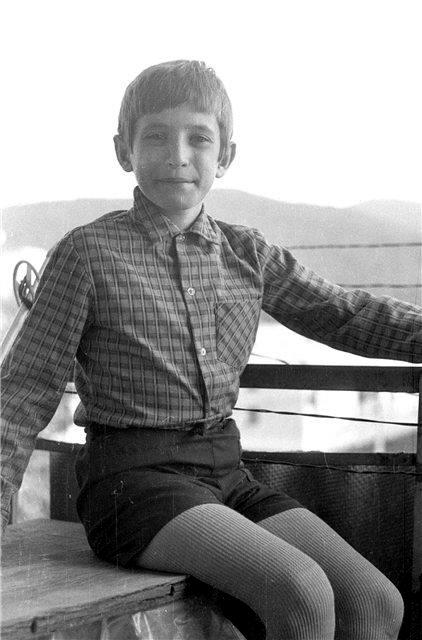
Figure 1.--This Russian boy in the 1980s wears short pants with ribbed tights. He lived in Vladisvostock. |

|
As in Western and Central Europe, knee pants were commonly worn in Russian cities before World War I. There is aot of similatity with German. And we see Russian boys wearing short pants after World War I. again primarily in the cities. Russia's climate mitigated against short pants being as common as in Western Europe, although many mothers solved this problem by having boys wear shorts with long stockings. Some boys later also wore shorts with tights. Short pants seem to have been at first a garment restricted to the more fashionable cities. Photographs from rural areas in the 1920s and 30s almost always show boys wearing long pants. And after the Stalin's collectivization, we see great poverty in the countryside with children wearing hand-me downs and patched clpthing. And in the cities, working-class boys also wore long pants more commonly than the more affluent families. It was the more fashionable educated elite that was more likely to wear short pants. Such observable social class differences are somewhat surprising in a country presenting itself as classless society. These differences gradually disappeared after World War II a living standards began to impove and children were dressed a little more fashionably, including working-class children. Short pants including a short pants uniform were commonly worn at Soviet Young Pioneer camps by boys through the 1980s. Girls had Jeans became as fashion standard for boys in the 1970s. As in Western Europe, boys now mostly dress up in long pants and wear short panmts as casual attire during the war summer months. We see different kinds of short panrs, including suspender shorts.
As in Western and Central Europe, knee pants were commonly worn in Russian cities before World War I. at least in the cities. In rural areas, traditional clothing was still very common. And we see Russian boys wearing short pants after World War I. again primarily in the cities. Jeans became as fashion standard for boys in the 1970s. As in Western Europe, boys now mostly dress up in long pants and wear short pants as casual attire during the war summer months.
We commonly see Russian boys wearin short pannts in the summer. Russia's climate mitigated against short pants being as common as in Western Europe, although many mothers solved this problem by having boys wear shorts with long stockings. This was fairly ciommon in the mod-20th century. Some younger boys later also wore shorts with tights after they appeared (1970s).
And in the cities, working-class boys also wore long pants more commonly than boys from the more affluent families. Short pants seem to have been at first a garment restricted to the more fashionable cities. Demographics significantly affected tthe clothes Russian boys wore, includuing thr pants. Traditional clothing was standard in rural areas during the 19th century. This changed realtively quickly during the Soviet era. Photographs from rural areas in the 1920s and 30s almost always show boys wearing long pants. And after the Stalin's collectivization, we see great poverty in the countryside with children wearing hand-me downs and patched clothing.
It was the more fashionable educated Soviet elite that seems the most likely to dress boys in short pants. We are still addressing this as we build our Russian archive. Of course during the Soviet Era, middle-class meant working for the Government in some administartive or clerical capacity or working in one of the professions. Boys from actual pre-Revolutionary middle-class families could be adversely affected in their careers. Evem so, nothers still seem to want to dress their children smartly. Such observable social class differences are somewhat surprising in a country presenting itself as classless society. These differences gradually disappeared after World War II a living standards began to slowly impove and the population, including the children, dressed a little more fashionably, including working-class children.
The Soviets began building a Pioneer summer camp pogram after the Revolution. Uniforms were not yet very common. Short pants including a short pants uniform were commonly worn at Soviet Young Pioneer camps by boys after World War II. through the 1980s. Girls had skirts.
We see different kinds of short pants. Suspender shorts were common in the inter-War era, probably because belts and elastixized waislines were not yet very common. We notice bib-front shorts after World War II. We begin to see shorts similar to those being worn in Europe during the 1970s.
There is a lot of similatity with Germany.
Navigate the Boys' Historical Clothing Web Site:
[Introduction]
[Activities]
[Biographies]
[Chronology]
[Clothing styles]
[Countries]
[Topics]
[Bibliographies]
[Contributions]
[FAQs]
[Glossaries]
[Images]
[Links]
[Registration]
[Tools]
[Boys' Clothing Home]
Navigate the Historic Boys' Clothing Russian pages:
[Ballet]
[Children's literature]
[Choirs]
[Fashion magazines]
[Movies]
[Royalty]
[School uniform]
[Youth groups]
Navigate the Boys' Historical Clothing Web ite:
[Return to the Main short pants country page]
[Return to the Main Russian pants type page]
[Return to theMain country page]
[Australia]
[Canada]
[England]
[France]
[Germany]
[Ireland]
[Italy]
[Mexico]
[New Zealand]
[Poland]
[Russia]
[Scotland]
[United States]
